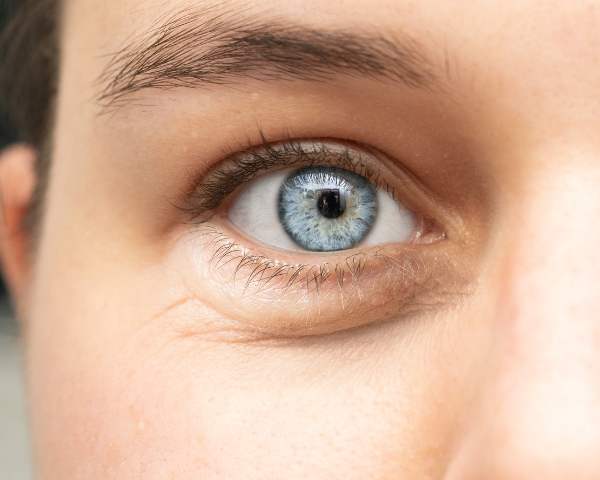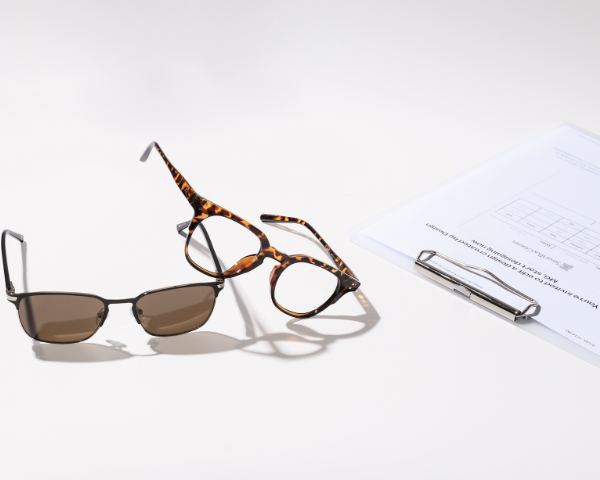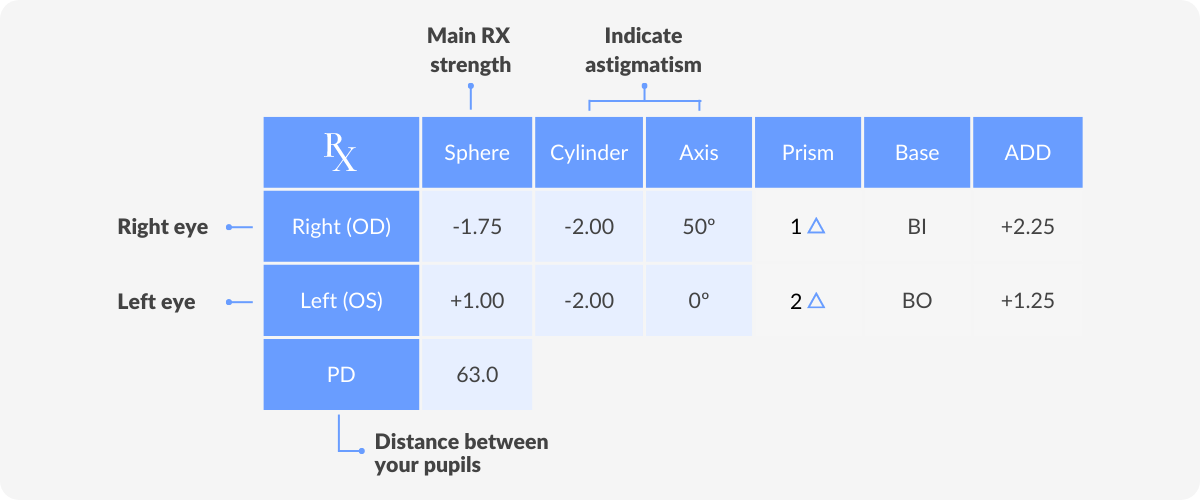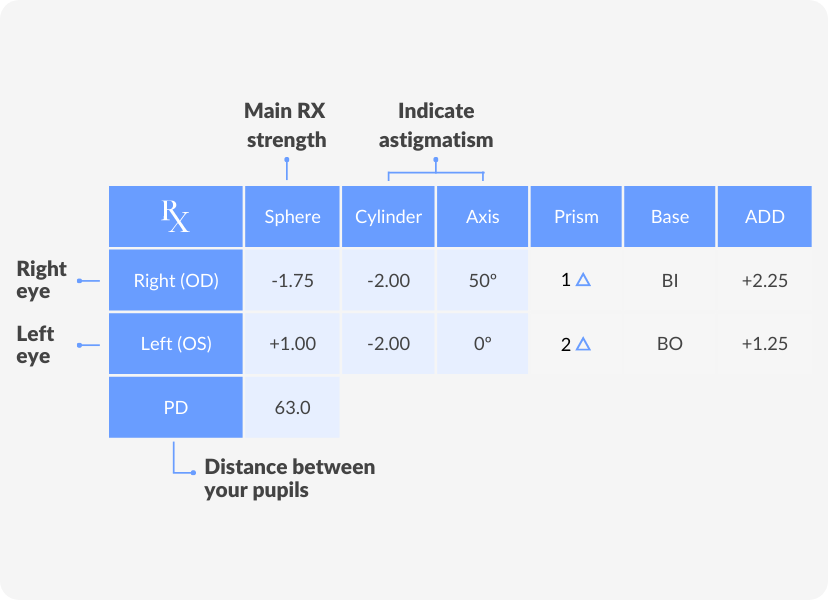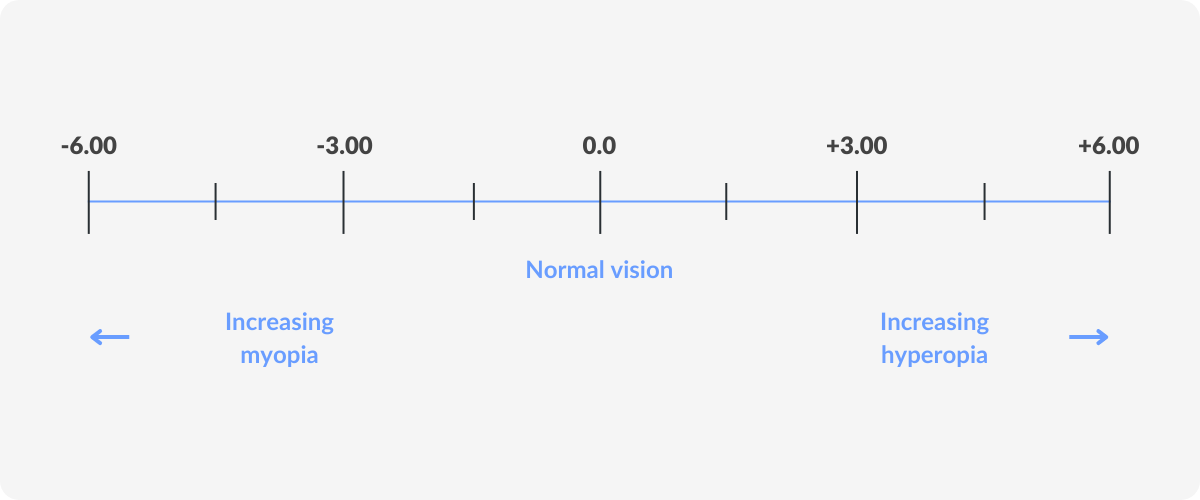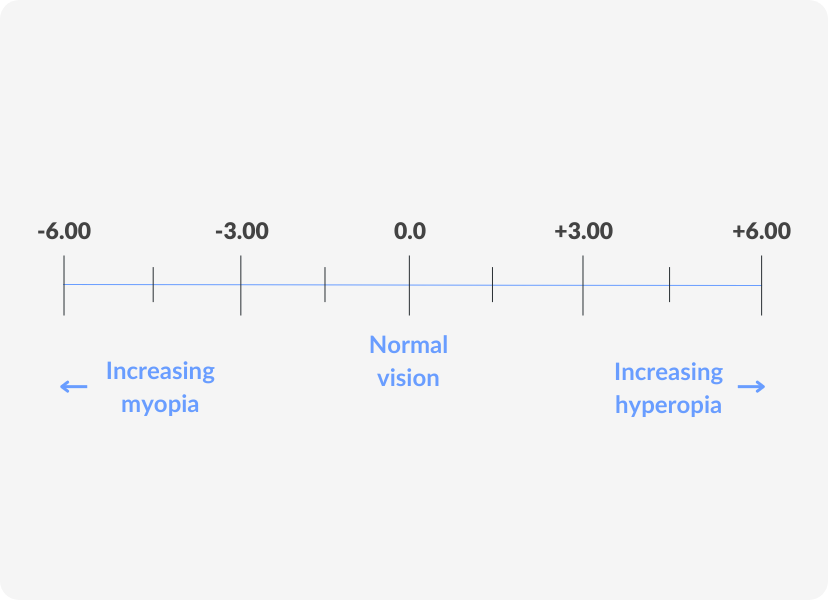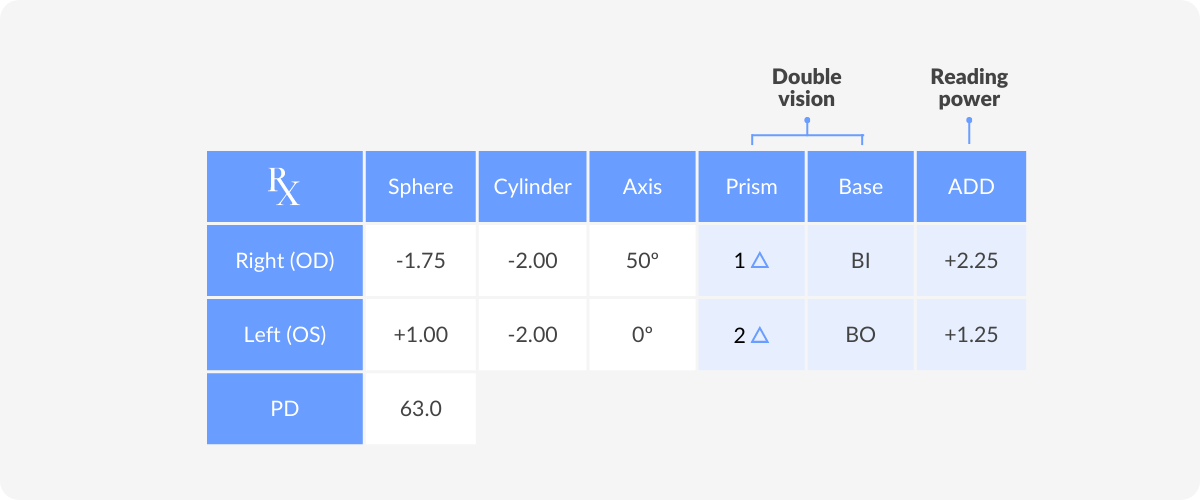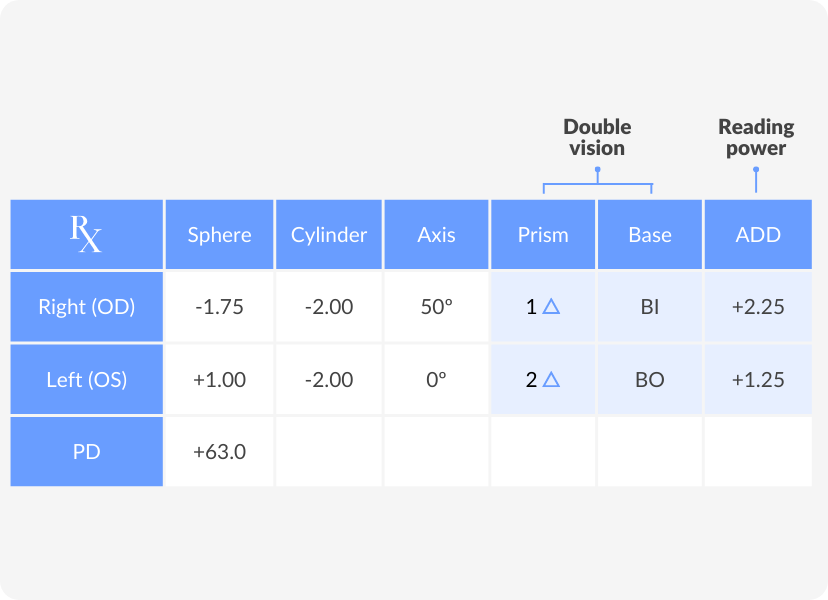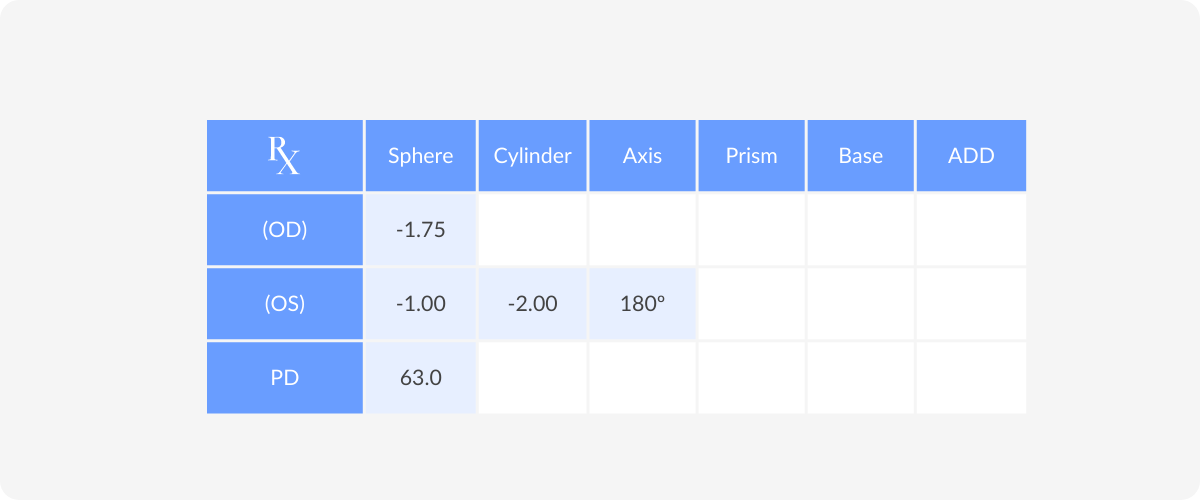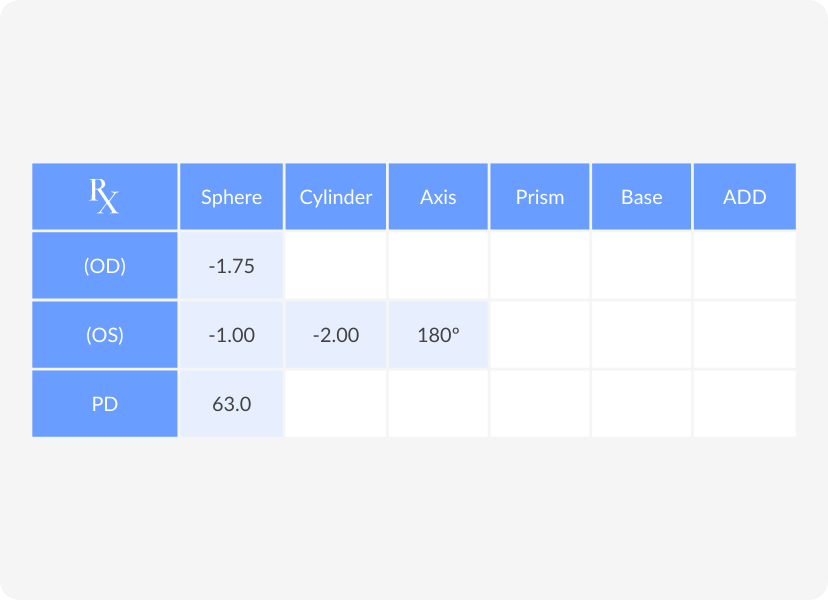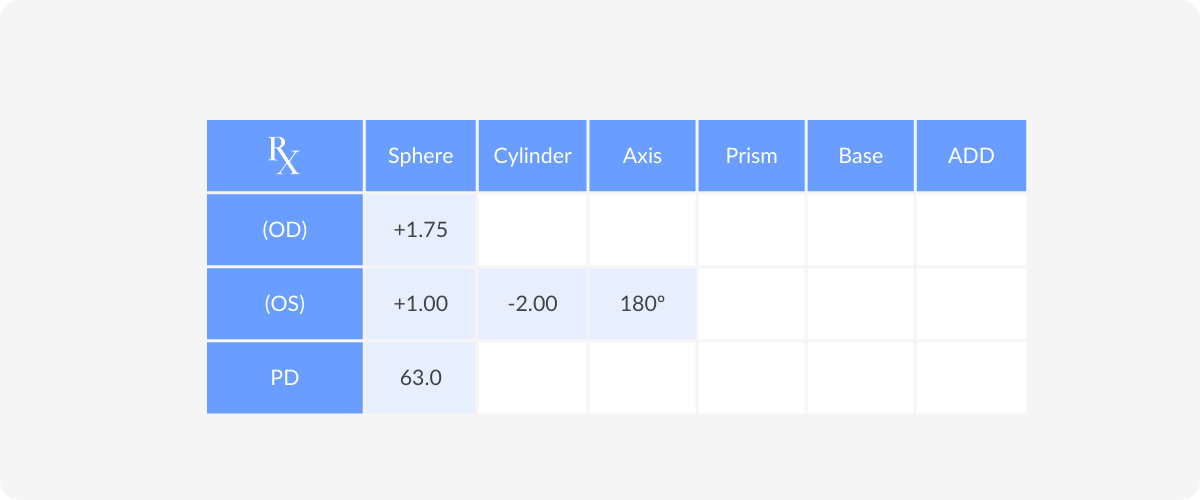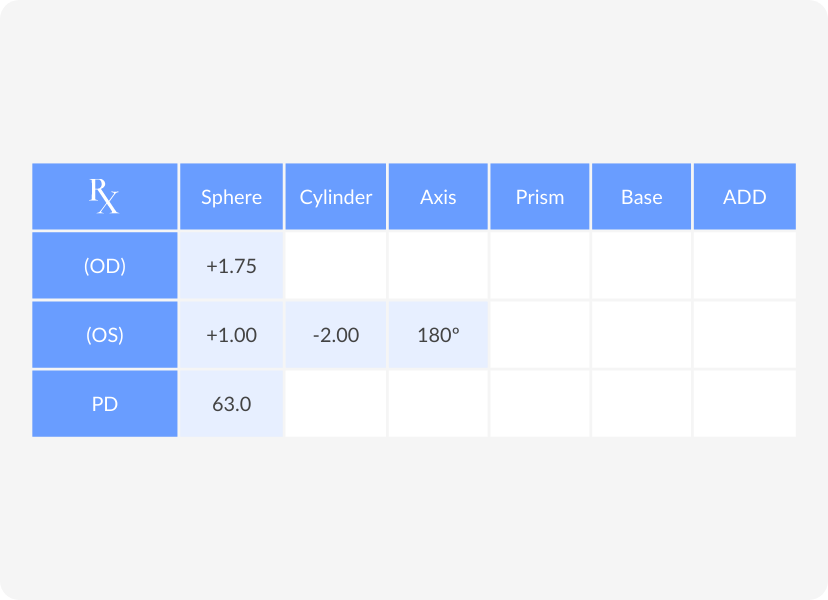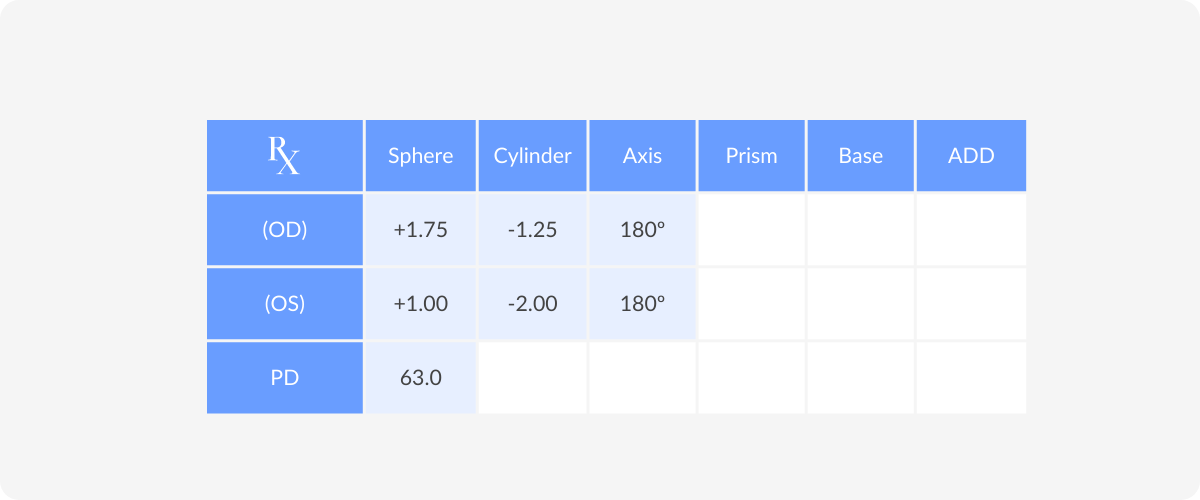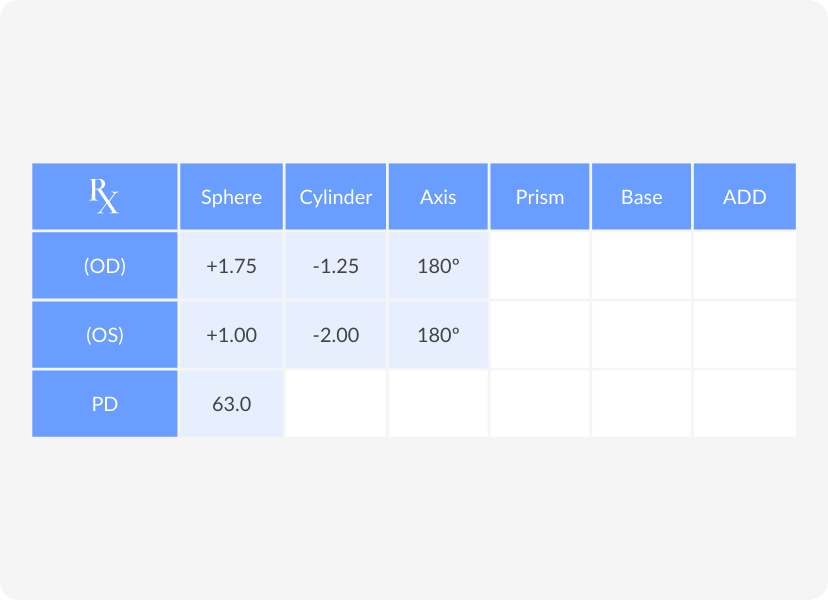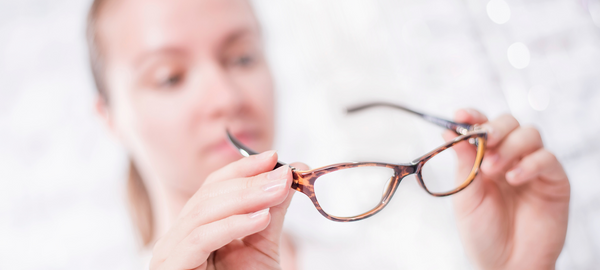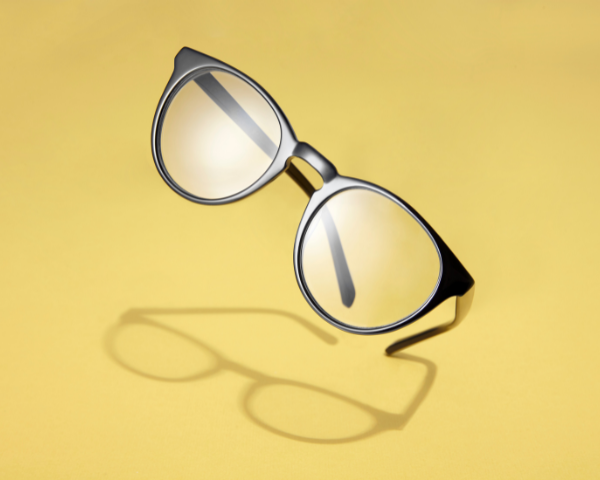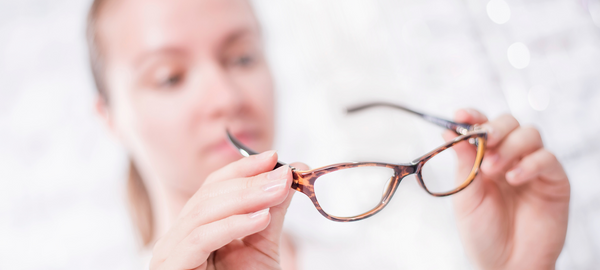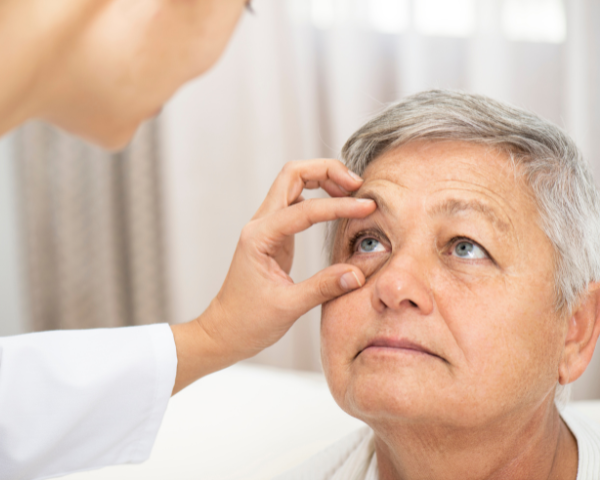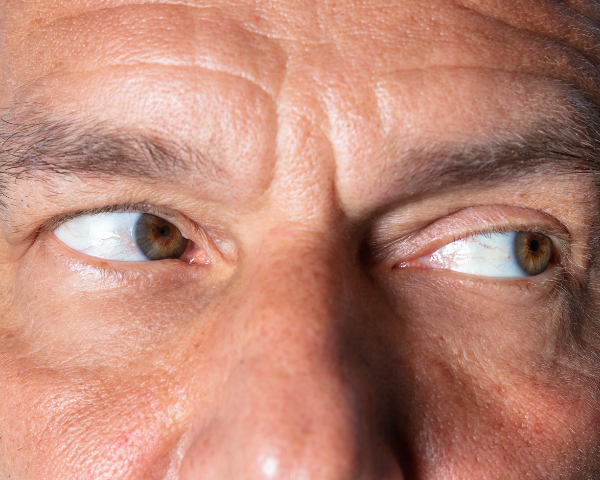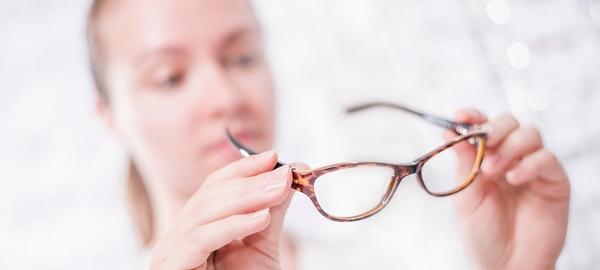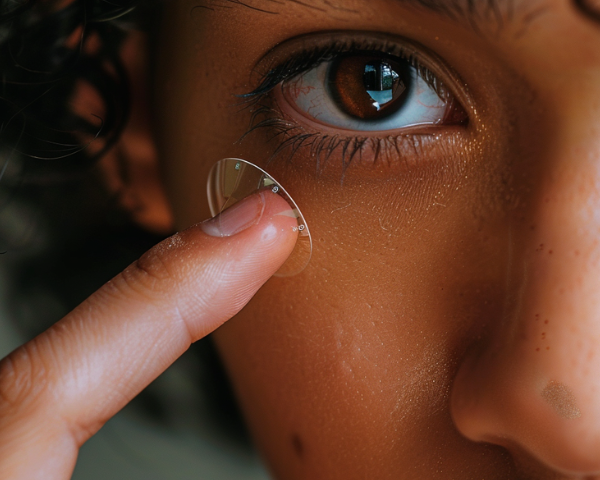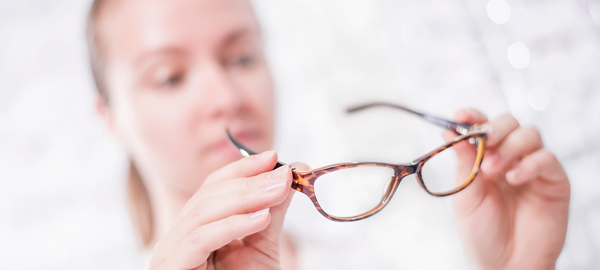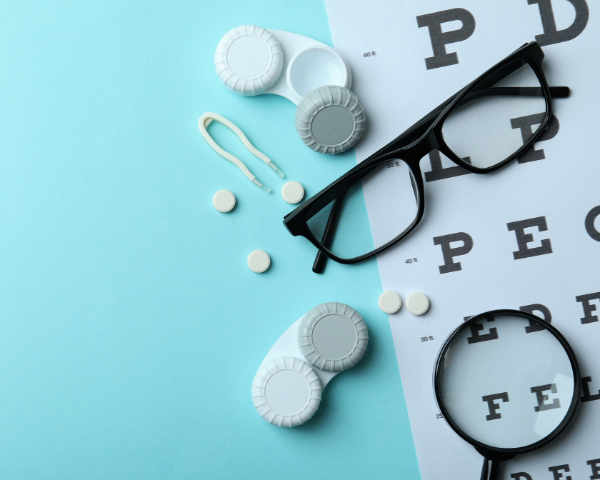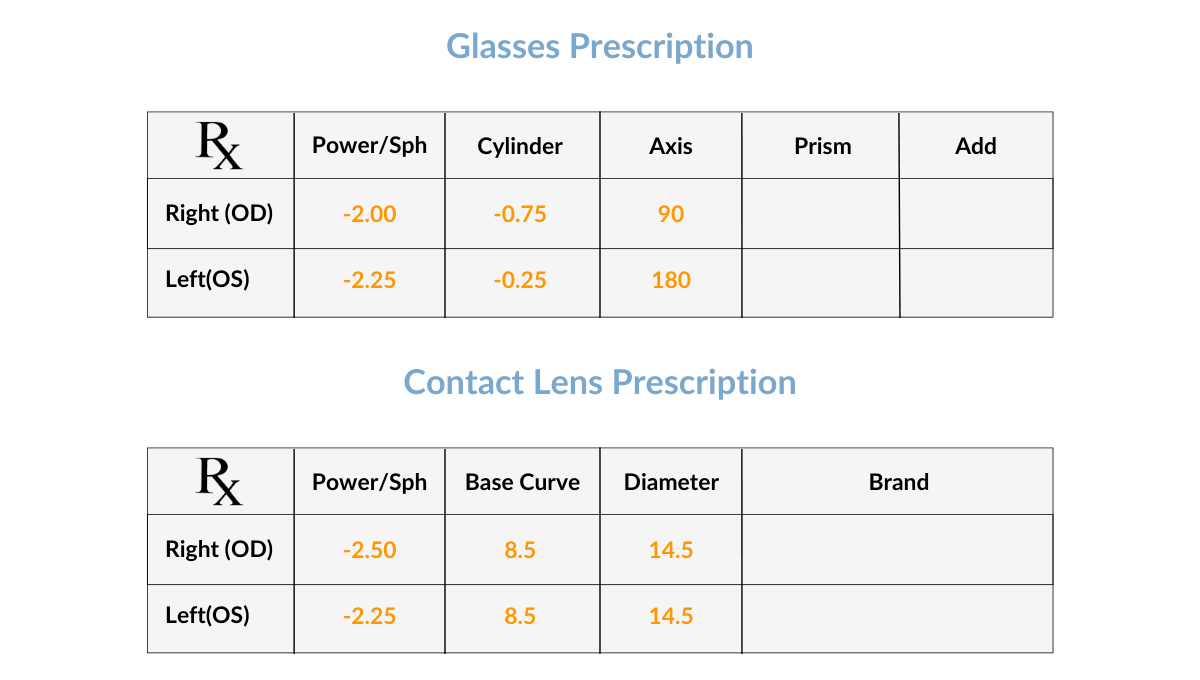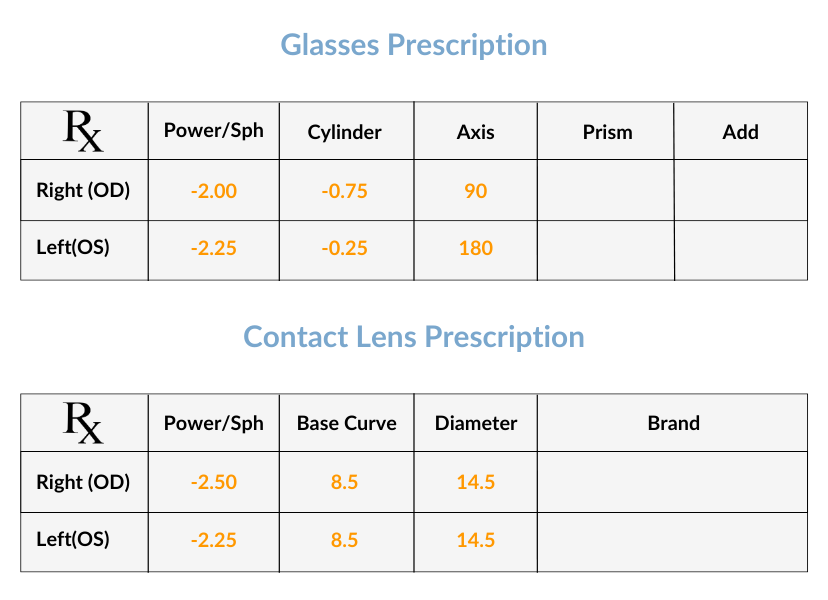What are Computer Glasses
What type of glasses are best for computer use? | What is the difference between computer glasses and regular glasses? | How do they work?

Reviewed by
Beck JinetteContents

Computer glasses, also called computer reading glasses, are prescription glasses specifically designed for computer use. These glasses are created to relieve digital eyestrain and shield from the blue light emitted by screens. If your job or lifestyle requires you to spend several hours of the day in front of the computer, it is important to understand what are computer glasses, how they work and where to get a pair if needed.
What type of glasses are best for computer use?
Extended exposure to computer screen can cause digital eye strain, also called computer vision syndrome. When suffering from digital eyestrain, you might find yourself experiencing the following symptoms:
- Headaches
- Blurry vision
- Tired eyes
- Dry eyes
- Eye twitching
- Red eyes
- Sleep problems
- Neck pain
Because our eyes are not used to staring at close objects for a very long period of time and are very sensitive to the potentially harmful blue light emitted by screens, wearing computer glasses can be beneficial and help relieve the discomforts listed above.
What is the difference between computer glasses and regular glasses?
Computer glasses are different from regular glasses or generic reading glasses because their specific purpose is to reduce the digital eyestrain associated with computer work. If you’re tempted to buy a generic pair of reading glasses off-the-rack, keep in mind these most likely won’t solve any of your problems as they do not have an anti-reflective coating or blue light-blocking coating. Additionally, computer glasses have a customized prescription, which means not everyone will be able to wear the same pair of glasses to work in front of a screen. To find which glasses are the best fit for you, taking an eye exam is the right option.
Computer glasses vs reading glasses
When working in front of a computer, you are typically positioned 20-26 inches from it which is considered the intermediate zone of vision. This is the reason computer glasses have a different power to your reading glasses: when reading, the distance from your book is usually closer to you than a computer screen, this is why they vary. We do not advise selecting the power without consulting an eye care specialist, as that might result in choosing the wrong glasses and damaging your vision.
How do computer glasses work?
As previously mentioned, the main focus of computer glasses is to reduce eye strain. If your daily routine requires working in front of the computer for extended periods of time, or you’re a gamer and spend hours in front of other digital devices, you may have noticed changes in your eye health, posture, and sleeping schedule. Not only does computer blue light cause discomfort in the eyes, but it also affects energy levels that then result in trouble falling asleep and sleep disruption. Prolonged exposure to blue light can also damage cells in the retina and cause vision problems. Another important factor to note is that our eyes are not used to staring at close objects for an extended period of time. This can result in you squinting your eyes very often and having tension in your neck.
DID YOU KNOW
Computer glasses can help digital eye strain and all the discomforts associated with computer work.
Computer glasses not only feature lens coatings designed to block blue light but are also custom to your prescription and feature decentered pupillary distance. The prescription varies from person to person, which means buying one generic pair off the rack won’t be helpful. Instead, consult an eye care specialist.
When wearing computer glasses, all the harmful blue light is blocked by the lens coatings on your glasses, and only the beneficial blue light is able to pass through and reach your retina. It is important to remember that computer glasses or blue light glasses only block about 50% of blue light because blue light in small quantities is actually necessary for certain bodily functions and keeps your system healthy.
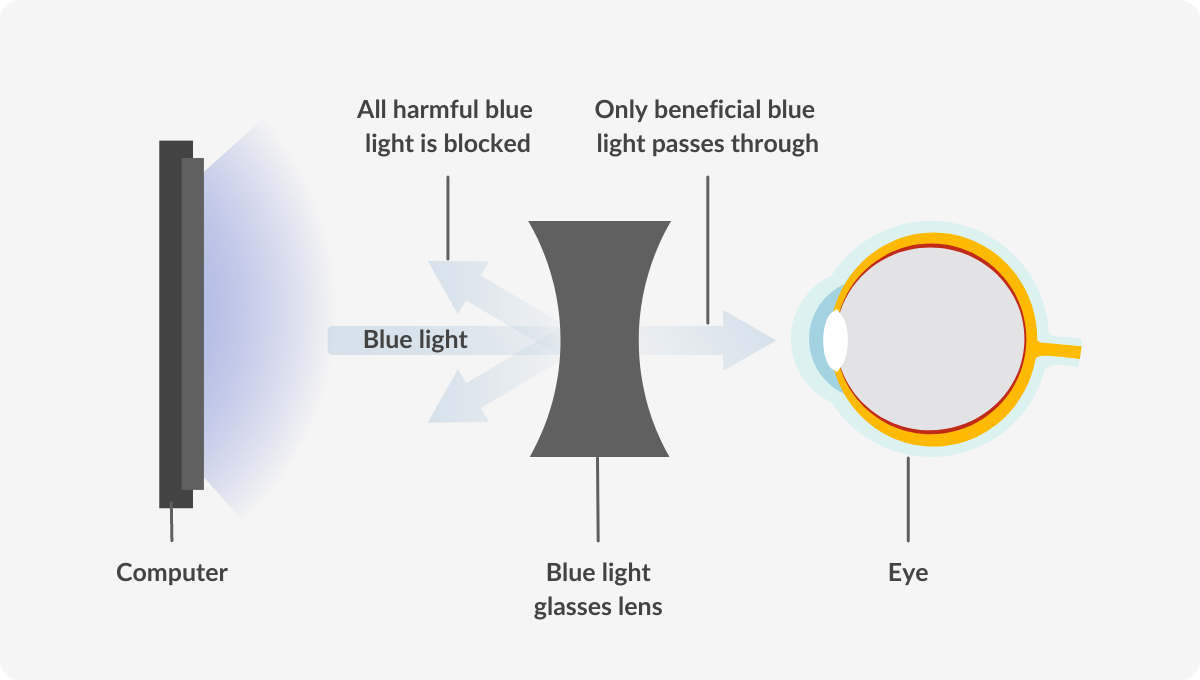
Who needs computer glasses?
Computer glasses are very useful for those who use technological devices daily and are prone to blue light exposure for many hours of the day. Almost all heavy users of computers and smartphones experience eye fatigue within minutes after being used. Studies show that the average person spends seven to eight hours in front of multiple electronic devices: from computers to mobile phones, gaming screens, TVs and so on. With technology being more and more present in our lives and our digital eye developing, our glasses should too. This is why computer glasses are more important than ever.
Do I need a different prescription for computer glasses?
The answer is yes; computer glasses will need a prescription with an intermediate add, which should be discussed with your eye care specialist during your appointment. If you experience eye strain, blurry vision or any of the discomforts listed above, it is crucial to consult an eye care specialist before getting a new pair of glasses. Don’t underestimate the importance of getting your eyes checked.
Before going to your healthcare provider, make sure you make a list of all of the symptoms you’re experiencing. If you spend long hours in front of your computer, you’re going to want to measure the distance you usually have from your computer while working or studying. That may be an important detail for the optician to have when filling in your prescription.
Do computer glasses really work?
The real effectiveness of blue light glasses has always been up for debate. Even though their effectiveness has never been scientifically proven, research suggests that the benefits of blue light glasses can include less eye strain, fewer sleep disturbances, and a decrease in headaches. When it comes to computer glasses, these not only provide protection against blue light but have a custom prescription and decentered pupillary distance. This means that by using computer glasses during work, you will be able to see clearly and avoid leaning forward to your screens, keeping a better posture and not squinting your eyes.
Benefits of computer glasses
To sum up, using glasses for computer use comes with many benefits, such as:
- Reduced computer vision syndrome
- Good posture
- Minimized glare
- Protection from blue light
Where to Find the Perfect Pair of computer reading glasses
If you’re suffering from computer vision syndrome and find yourself exhausted after working or studying in front of a computer, head to your eye care specialist and make sure you get your eyes checked. With your prescription up to date, you will then be able to buy the right pair of computer glasses for you with blue light-blocking lenses. You can head to SmartBuyGlasses and find many quality glasses with affordable options, as well as hundreds of lens types, frame colours, and materials.
You don’t have to decide on single-vision computer glasses – if the glasses are to serve you not only at the computer but also during other activities related to distance vision, consider using progressive lenses in your blue light-blocking glasses.
Remember it is essential for your eyes to rest, so after getting a good pair of computer glasses, make sure you also take breaks from the screens during your working and studying hours, and limit screen use when possible. Your eye health is important.
If you want to read more about digital eye strain and blue light glasses, head to our Optical Centre; you will find numerous informative articles thoroughly reviewed by our certified opticians
What are Computer Glasses
What type of glasses are best for computer use? | What is the difference between computer glasses and regular glasses? | How do they work?

Reviewed by
Beck Jinette
Computer glasses, also called computer reading glasses, are prescription glasses specifically designed for computer use. These glasses are created to relieve digital eyestrain and shield from the blue light emitted by screens. If your job or lifestyle requires you to spend several hours of the day in front of the computer, it is important to understand what are computer glasses, how they work and where to get a pair if needed.
What type of glasses are best for computer use?
Extended exposure to computer screen can cause digital eye strain, also called computer vision syndrome. When suffering from digital eyestrain, you might find yourself experiencing the following symptoms:
- Headaches
- Blurry vision
- Tired eyes
- Dry eyes
- Eye twitching
- Red eyes
- Sleep problems
- Neck pain
Because our eyes are not used to staring at close objects for a very long period of time and are very sensitive to the potentially harmful blue light emitted by screens, wearing computer glasses can be beneficial and help relieve the discomforts listed above.
What is the difference between computer glasses and regular glasses?
Computer glasses are different from regular glasses or generic reading glasses because their specific purpose is to reduce the digital eyestrain associated with computer work. If you’re tempted to buy a generic pair of reading glasses off-the-rack, keep in mind these most likely won’t solve any of your problems as they do not have an anti-reflective coating or blue light-blocking coating. Additionally, computer glasses have a customized prescription, which means not everyone will be able to wear the same pair of glasses to work in front of a screen. To find which glasses are the best fit for you, taking an eye exam is the right option.
Computer glasses vs reading glasses
When working in front of a computer, you are typically positioned 20-26 inches from it which is considered the intermediate zone of vision. This is the reason computer glasses have a different power to your reading glasses: when reading, the distance from your book is usually closer to you than a computer screen, this is why they vary. We do not advise selecting the power without consulting an eye care specialist, as that might result in choosing the wrong glasses and damaging your vision.
How do computer glasses work?
As previously mentioned, the main focus of computer glasses is to reduce eye strain. If your daily routine requires working in front of the computer for extended periods of time, or you’re a gamer and spend hours in front of other digital devices, you may have noticed changes in your eye health, posture, and sleeping schedule. Not only does computer blue light cause discomfort in the eyes, but it also affects energy levels that then result in trouble falling asleep and sleep disruption. Prolonged exposure to blue light can also damage cells in the retina and cause vision problems. Another important factor to note is that our eyes are not used to staring at close objects for an extended period of time. This can result in you squinting your eyes very often and having tension in your neck.
DID YOU KNOW
Computer glasses not only feature lens coatings designed to block blue light but are also custom to your prescription and feature decentered pupillary distance. The prescription varies from person to person, which means buying one generic pair off the rack won’t be helpful. Instead, consult an eye care specialist.
When wearing computer glasses, all the harmful blue light is blocked by the lens coatings on your glasses, and only the beneficial blue light is able to pass through and reach your retina. It is important to remember that computer glasses or blue light glasses only block about 50% of blue light because blue light in small quantities is actually necessary for certain bodily functions and keeps your system healthy.
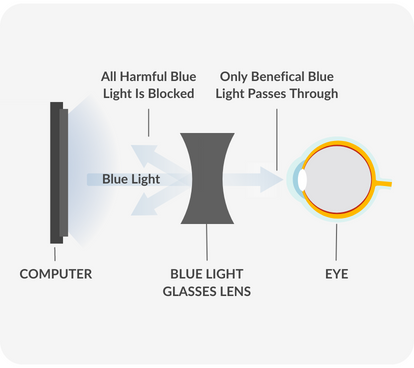
Who needs computer glasses?
Computer glasses are very useful for those who use technological devices daily and are prone to blue light exposure for many hours of the day. Almost all heavy users of computers and smartphones experience eye fatigue within minutes after being used. Studies show that the average person spends seven to eight hours in front of multiple electronic devices: from computers to mobile phones, gaming screens, TVs and so on. With technology being more and more present in our lives and our digital eye developing, our glasses should too. This is why computer glasses are more important than ever.
Do I need a different prescription for computer glasses?
The answer is yes; computer glasses will need a prescription with an intermediate add, which should be discussed with your eye care specialist during your appointment. If you experience eye strain, blurry vision or any of the discomforts listed above, it is crucial to consult an eye care specialist before getting a new pair of glasses. Don’t underestimate the importance of getting your eyes checked.
Before going to your healthcare provider, make sure you make a list of all of the symptoms you’re experiencing. If you spend long hours in front of your computer, you’re going to want to measure the distance you usually have from your computer while working or studying. That may be an important detail for the optician to have when filling in your prescription.
Do computer glasses really work?
The real effectiveness of blue light glasses has always been up for debate. Even though their effectiveness has never been scientifically proven, research suggests that the benefits of blue light glasses can include less eye strain, fewer sleep disturbances, and a decrease in headaches. When it comes to computer glasses, these not only provide protection against blue light but have a custom prescription and decentered pupillary distance. This means that by using computer glasses during work, you will be able to see clearly and avoid leaning forward to your screens, keeping a better posture and not squinting your eyes.
Benefits of computer glasses
To sum up, using glasses for computer use comes with many benefits, such as:
- Reduced computer vision syndrome
- Good posture
- Minimized glare
- Protection from blue light
Where to find the perfect pair of computer reading glasses
If you’re suffering from computer vision syndrome and find yourself exhausted after working or studying in front of a computer, head to your eye care specialist and make sure you get your eyes checked. With your prescription up to date, you will then be able to buy the right pair of computer glasses for you with blue light-blocking lenses. You can head to SmartBuyGlasses and find many quality glasses with affordable options, as well as hundreds of lens types, frame colours, and materials.
You don’t have to decide on single-vision computer glasses – if the glasses are to serve you not only at the computer but also during other activities related to distance vision, consider using progressive lenses in your blue light-blocking glasses.
Remember it is essential for your eyes to rest, so after getting a good pair of computer glasses, make sure you also take breaks from the screens during your working and studying hours, and limit screen use when possible. Your eye health is important.
If you want to read more about digital eye strain and blue light glasses, head to our Optical Centre; you will find numerous informative articles thoroughly reviewed by our certified opticians.









































